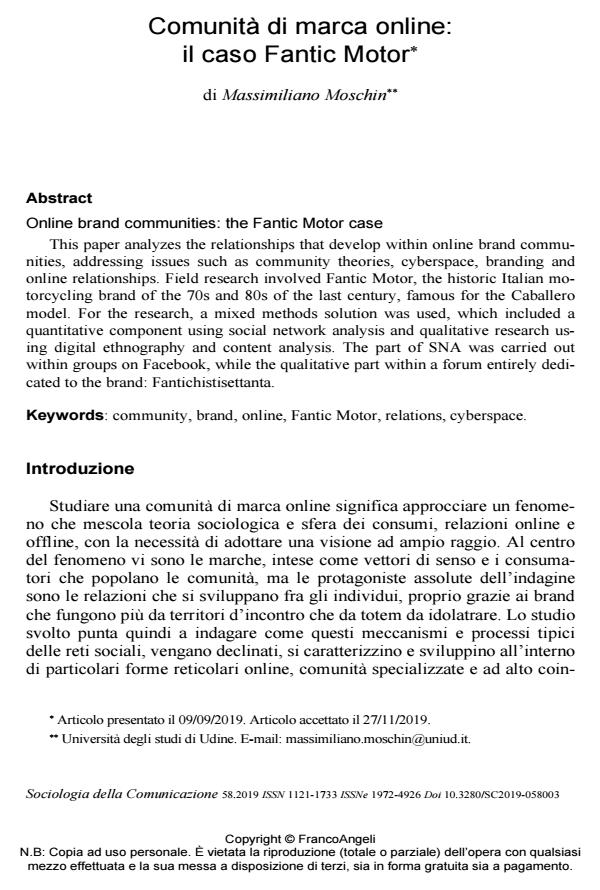Comunità di marca online: il caso Fantic Motor
Titolo Rivista SOCIOLOGIA DELLA COMUNICAZIONE
Autori/Curatori Massimiliano Moschin
Anno di pubblicazione 2020 Fascicolo 2019/58
Lingua Italiano Numero pagine 19 P. 44-62 Dimensione file 481 KB
DOI 10.3280/SC2019-058003
Il DOI è il codice a barre della proprietà intellettuale: per saperne di più
clicca qui
Qui sotto puoi vedere in anteprima la prima pagina di questo articolo.
Se questo articolo ti interessa, lo puoi acquistare (e scaricare in formato pdf) seguendo le facili indicazioni per acquistare il download credit. Acquista Download Credits per scaricare questo Articolo in formato PDF

FrancoAngeli è membro della Publishers International Linking Association, Inc (PILA)associazione indipendente e non profit per facilitare (attraverso i servizi tecnologici implementati da CrossRef.org) l’accesso degli studiosi ai contenuti digitali nelle pubblicazioni professionali e scientifiche
This paper analyzes the relationships that develop within online brand communities, addressing issues such as community theories, cyberspace, branding and online relationships. Field research involved Fantic Motor, the historic Italian motorcycling brand of the 70s and 80s of the last century, famous for the Caballero model. For the research, a mixed methods solution was used, which included a quantitative component using social network analysis and qualitative research using digital ethnography and content analysis. The part of SNA was carried out within groups on Facebook, while the qualitative part within a forum entirely dedicated to the brand: Fantichistisettanta.
Parole chiave:Community, brand, online, Fantic Motor, relations, cyberspace
Massimiliano Moschin, Comunità di marca online: il caso Fantic Motor in "SOCIOLOGIA DELLA COMUNICAZIONE " 58/2019, pp 44-62, DOI: 10.3280/SC2019-058003